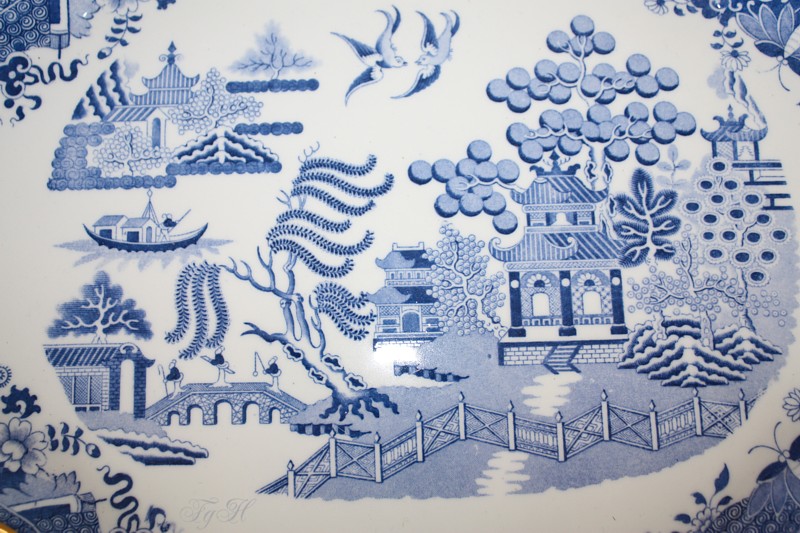
“The Spode factory was without doubt the most important factory in the 19th century” –Antoinette Fay-Hallé, Curator, Sèvres
Do you love Blue & White porcelain and pottery as much as I do? I am over the moon excited about this gorgeousantique set of Mandarin made by Spode in 1881. {SORRY IT”S SOLD}
A little history on Spode: Spode has produced high quality products at the same factory in Stoke-upon-Trent, North Staffordshire, England since it was established by Josiah Spode I in the late 1700s.
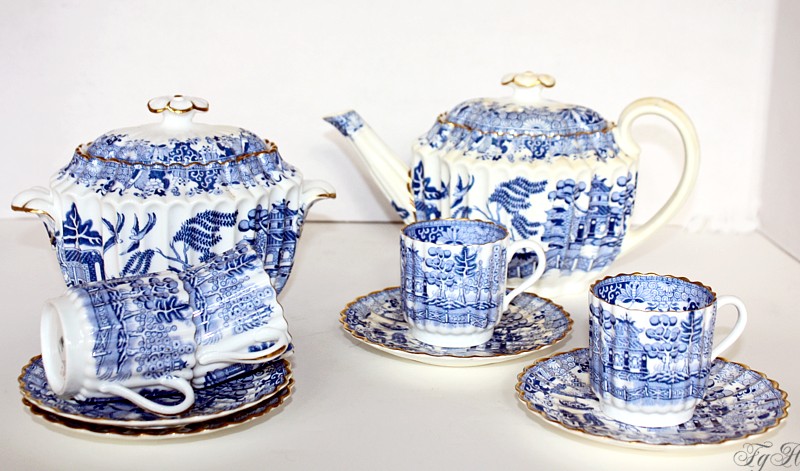
Josiah Spode I (1733-1797) established his famous pottery in Stoke-upon-Trent in 1770, he finished buying his factory in 1776. In 1778 his son Josiah Spode II (1755-1827) opened a shop in London in order to trade in pottery and was highly successful in sales and marketing. He had to join the Guild of Spectacle Makers as it was mandated to belong to one of the Guilds to operate a business in London, and “pottery” was such a new trade at the time, that it didn’t have its own guild yet!
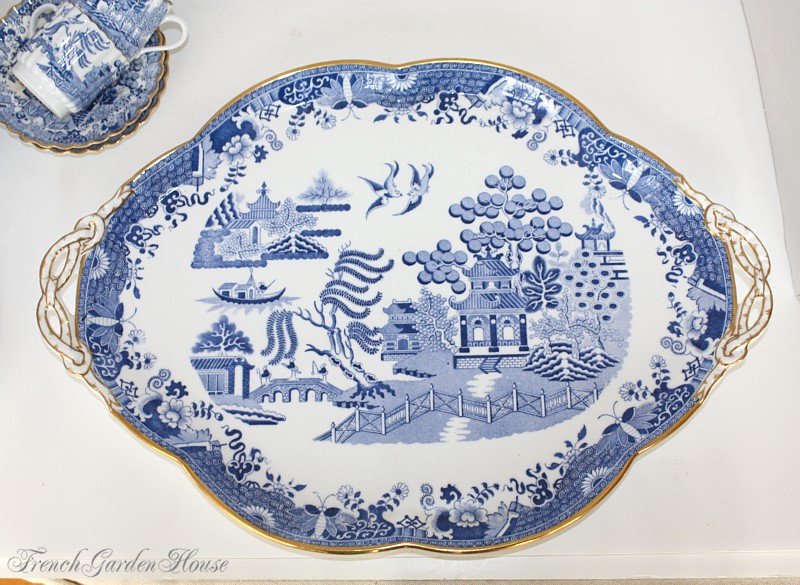
In 1784 Spode perfected the technique of underglaze transfer printing using designs hand engraved onto copper plates and printed onto biscuit earthenware. Most of the best loved pieces were copies of Chinese porcelain decorated with blue and white landscapes. Spode’s new designs included the Willow pattern {derived from Chinese landscapes} and by 1816 the Italian pattern. The Spode pieces filled a need for replacements for the Chinese porcelain which was becoming very difficult to obtain from Canton, China.
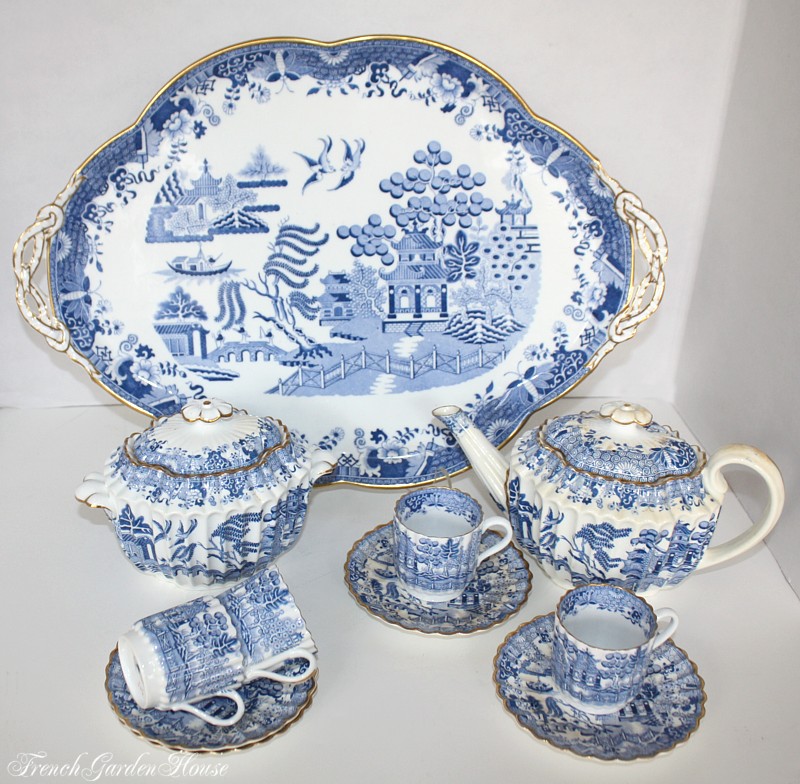
Two birds flying high,
A Chinese vessel, sailing by.
A bridge with three men, sometimes four,
A willow tree, hanging o’er.
A Chinese temple, there it stands,
Built upon the river sands.
An apple tree, with apples on,
A crooked fence to end my song.
There is a well known legend about Blue Willow that most collectors know. {you can read about it below} You might be surprised to learn that it was invented by British porcelain manufacturers around two hundred years ago as a clever promotional tool for the marketing of their Willow tableware!
Thomas Turner at the Caughley works, Shropshire was the first to reproduce blue over white Chinese Nankin patterns on British porcelain in 1779, and other potters followed, like Thomas Minton, but Josiah Spode is believed to have developed the Willow Pattern in 1790.
Here is the BLUE WILLOW LEGEND:
A wealthy Mandarin of the Chinese Empire lived with his beautiful daughter Knoon~see in a grand palace, surrounded by exotic gardens. Chang, a low born young man, was the Mandarin’s secretary, he was hopelessly in love with the exquisite Knoon~se. Knoon~see loved him too, and they met each evening under a weeping willow tree by the river.
When the Mandarin learned of their meetings and love, he dismissed Chang and banned him from the estate. Knoon~see was imprisoned in a pavillion overlooking the river, Knoon~se was so lonely, she only had the birds as friends. The Mandarin surrounded the palace gardens with a crooked fence, and arranged for his daughter to marry a warrior Duke Ta~jin. Duke Ta~jin gifted the unwilling bride with a casket filled with precious jewels, but she only thought of her beloved, Chang.
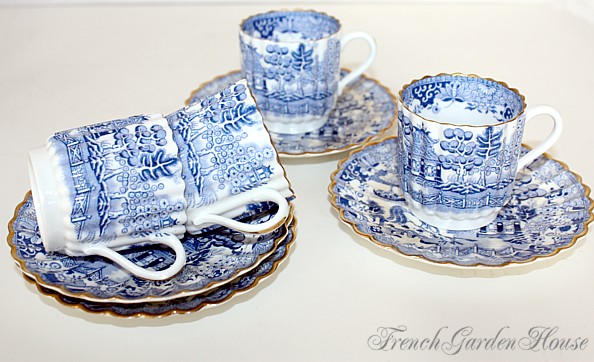
The devoted Chang, unaware that Knoon~se was soon to be married, also cared for and spoke to the birds, dreaming of ways to contact his lost love. He sent a note to her, and while the Madarin and the warrior Duke Ta~jin feasted and got ready for the wedding, Chang and Knoon~se met in secret, grabbed the jewels, and fled across the bridge to a boat that Change had tied up to escape with. The two lovers sailed to a far away land where they sold the jewels and bought a small pagoda where they livd in bliss. {the Willow pattern shows their distant pagoda surrounded by lush vegetation.}
Seeking revenge, the Mandarin captured and caged all the bird in his gardens. He and the Duke sent spies to try to find the two lovers, but failed. Finally, the Mandarin thought to release the birds, ordering his men to follow them, sure they would lead them to his daughter and Chang. The devoted birds, who never forgot their two loving friends, led the evil army straight to the far of pagoda. The warriors set the pagoda on fire, and tragically the lovers perished.
The gods took pity on the two doomed lovers and blessed their undying love by granting them immortality. From the charred ruins of their home, the souls of Knoon~se and Chang soared into the sky as two turtledoves, and kissed again, beyond fear, dang, and forever free : they symbolized eternal love.
If you want to romance your Home and Garden with antique and vintage treasures to make you smile each time you come home, visit our shop FrenchGardenHouse.




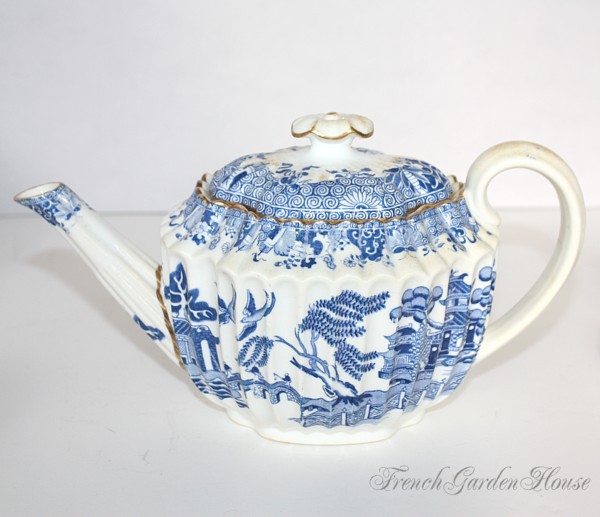



 Your Cart
Your Cart
I have a small plate made by north staffordshire pottery co. Ltd England RIDGWAY that I just love.
I have a platter made in USA in the Blue Willow pattern.
What a beautiful collection of Spode! The Blue Willow pattern is one of my favorites…
I grew up using blue willow dishes for meals, they are my favorite as they were part of my happy childhood!